Goddess Annapurna, also known as Annapurna Devi or Annapurna Mata, is revered as the divine embodiment of nourishment, sustenance, and the vital force that supports life. In Hinduism, food is not merely a physical necessity; it is considered sacred, a gift from the divine. Goddess Annapurna symbolizes this sacredness, ensuring that all living beings are provided with the nourishment needed to thrive. As an incarnation of Goddess Parvati, she represents the maternal, nurturing aspect of the divine, sustaining both the body and soul.
In this article, we explore the significance of Goddess Annapurna in Hinduism, her iconography, mythology, festivals, and the spiritual benefits of worshiping her. We will also delve into the various rituals and practices dedicated to her, highlighting her crucial role in both physical and spiritual nourishment.
Who is Goddess Annapurna?
Goddess Annapurna is considered the divine provider who sustains all life with her blessings. Often depicted with a golden ladle and pot, Annapurna is seen as the source of both physical nourishment and spiritual wisdom, guiding her devotees toward holistic well-being and enlightenment.
Identity and Role in the Hindu Pantheon
Goddess Annapurna is often worshipped as the provider of sustenance, ensuring that no living being goes hungry. As a manifestation of Goddess Parvati, the consort of Lord Shiva, Annapurna represents a vital aspect of Shakti, the divine feminine energy. Her divine role is not only to provide physical nourishment but also to offer spiritual enrichment, guiding her devotees toward wisdom and enlightenment.
Family Lineage and Connections to Other Gods
Annapurna is closely associated with Lord Shiva, her consort, symbolizing the balance between material sustenance and spiritual wisdom. While she is an incarnation of Goddess Parvati, her role as the provider of nourishment places her in a unique position within the Hindu pantheon. She is often depicted in harmony with Shiva, who, in a famous legend, is shown to beg her for food, recognizing the importance of nourishment both for the body and soul.
Associated Elements (Vehicle/Vahana, Weapon, Symbols)
Goddess Annapurna is generally depicted holding a golden ladle and a pot filled with food in her hands. These items symbolize her role as the provider of nourishment. In some depictions, she is shown sitting on a throne with Lord Shiva standing beside her, humbly asking for food. She is also sometimes depicted with a book (Akshamala) and is believed to have the power to grant Moksha, the liberation from the cycle of birth and death. Her vahana is not often depicted, as she embodies the nurturing essence of the earth itself, providing sustenance to all.
Significance of Goddess Annapurna
Goddess Annapurna is not just the provider of food; she embodies the divine sustenance that nourishes both the physical body and the soul. Her significance goes beyond material sustenance, symbolizing the cosmic flow of nourishment that sustains all life. Worshipping Annapurna is an act of recognizing the sacredness of food, as it is a gift from the divine to support spiritual growth and enlightenment.
Philosophical and Spiritual Significance:
Nourisher of the Body and Soul: Goddess Annapurna represents the deeper spiritual principle that food is not just sustenance but a sacred offering, a means of connecting to the divine. Her blessings allow one to transcend physical hunger and achieve spiritual fulfilment.
Balance of Material and Spiritual: She symbolizes the delicate balance between material wealth and spiritual wisdom. While food nourishes the body, Annapurna’s presence fosters spiritual growth, teaching that material prosperity is intertwined with spiritual well-being.
The Divine Feminine Energy: As an incarnation of Goddess Parvati, Annapurna is the embodiment of Shakti – the divine feminine energy. Her role in maintaining the cosmic order of nourishment and abundance reflects her power to create, preserve, and transform both the physical and spiritual worlds.
Path to Moksha: Worshipping Annapurna not only provides material prosperity but also leads to higher knowledge and the realization that true nourishment comes from within. She helps devotees recognize that true fulfilment lies in spiritual nourishment and detachment from the material world.
Importance in Specific Regions or Sects:
Goddess Annapurna is revered across India, with the Annapurna Devi Mandir in Varanasi being one of the most significant temples dedicated to her. This sacred site attracts millions of devotees who come to seek her blessings for both material abundance and spiritual awakening.
Her worship is deeply tied to the concept of food as sacred. In regions like Varanasi, her blessings are invoked to ensure prosperity and spiritual peace. Worship of Annapurna is also prevalent among spiritual seekers who recognize the deeper connection between physical nourishment and spiritual elevation.
During the Akshaya Tritiya festival, she is venerated as the giver of inexhaustible abundance, symbolizing her eternal ability to provide for her devotees. The day is marked by acts of charity, emphasizing the importance of sharing and giving as a spiritual practice.
Iconography & Symbolism
Goddess Annapurna’s iconography is rich with symbolism, representing her divine role as the nurturer and provider of nourishment to all living beings. Her physical appearance and the symbolic elements associated with her reflect her essence as the goddess of food, abundance, and spiritual sustenance.
Physical Appearance and Symbolic Elements:
The Four Hands
Goddess Annapurna is shown holding four objects in her hands, each symbolizing her divine qualities and role in the universe:
Lower Left Hand: A pot filled with food, typically porridge, symbolizing her role as the provider of nourishment.
Right Hand: A golden ladle decorated with shimmering jewels, representing the act of serving food and blessings to her devotees.
Other Two Hands: She displays Abhaya (protection) and Varada (boon-giving) mudras, signifying her promise to protect and bless those who seek her.
Seated on a Golden Throne:
In some depictions, Goddess Annapurna is shown sitting majestically on a golden throne, symbolizing her royal and divine nature. This throne is often seen adorned with flowers and sacred symbols, reflecting her status as a goddess who rules over nourishment and abundance.
Lord Shiva’s Presence:
In many representations, Lord Shiva is depicted standing next to her with a begging vessel in his hand, humbly requesting food. This symbolizes his recognition of Annapurna's divine power and the essential nature of nourishment, acknowledging that even the divine need sustenance from the Goddess.
Other Symbols:
Goddess Annapurna may also be depicted holding an Akshamala (prayer beads) or a scripture, signifying her role in guiding devotees towards spiritual wisdom. The crescent moon adorning her head further symbolizes her association with purity, cycles, and the nurturing energies of the divine feminine.
Her depiction in art and temples often places her in dining areas, kitchens, and spaces associated with food preparation, reinforcing her significance as the divine provider. Images of Goddess Annapurna are also common in temples where food is offered as part of the worship rituals, symbolizing her blessings of abundance and prosperity.
This iconography underscores Goddess Annapurna’s role in both material and spiritual nourishment, teaching her devotees that nourishment extends beyond the physical and is vital for spiritual growth and enlightenment.
The Divine Birth and Cosmic Origin of Goddess Annapurna
The origin of Goddess Annapurna is deeply rooted in Hindu mythology, and her birth is tied to cosmic events and profound spiritual teachings. She is considered an incarnation of Goddess Parvati, who manifested as Annapurna to restore balance to the universe by providing nourishment, both physical and spiritual, to all beings.
Mythological Origins:
Goddess Annapurna is believed to have been born as an answer to a cosmic crisis. According to the Linga Purana, Lord Shiva once declared that food was merely an illusion, which enraged Goddess Parvati. To prove the importance of food, Parvati vanished from the earth, and the world was thrown into chaos. The absence of food led to a severe drought, and all beings, including gods and humans, began to suffer from hunger. In this time of crisis, Parvati reappeared in Varanasi as Annapurna, offering food to all those who were starving. This act of compassion and nourishment helped restore the cosmic order.
Connection to Cosmic Events:
The story of Goddess Annapurna’s origin is tied to the cosmic event where Lord Shiva’s arrogance led him to dismiss the importance of food. Through her manifestation as Annapurna, Goddess Parvati demonstrated that nourishment is essential for both physical survival and spiritual growth. This story also signifies the divine feminine's role in sustaining life and ensuring the flow of energy in the universe.
References in Scriptures:
The Annapurna Upanishad: This text, part of the 108 Upanishads, reveres Goddess Annapurna as the ultimate source of knowledge and wisdom. In this text, the worship of Annapurna is said to have blessed Sage Ribhu with the knowledge and wisdom he sought.
Skanda Purana: The Skanda Purana mentions that Sage Vyasa, during his travels, was directed by a curse to Varanasi, where he encountered Annapurna. She appeared as a humble housewife, offering him food. This incident emphasizes her nurturing and benevolent nature.
Devi Bhagavata: Describes Annapurna as the deity of Kanchipuram and mentions her association with Visalakshi of Varanasi, establishing her dual role in both the physical and spiritual realms.
Her origin story reflects the deep connection between nourishment, compassion, and the divine feminine energy. Through her manifestation as Annapurna, Goddess Parvati reassures that spiritual sustenance is just as essential as physical nourishment, and the two are intertwined to maintain the balance of life and the universe.
This origin story also teaches that even divine beings like Lord Shiva, who is often associated with asceticism, must rely on nourishment provided by the divine feminine, symbolized by Goddess Annapurna.
Divine Legends of Goddess Annapurna
Goddess Annapurna is deeply embedded in Hindu mythology, and her stories impart valuable moral and spiritual lessons. Here are some key legends that highlight her divine nature and her role in the cosmic order.
The Story of Lord Shiva's Humility:
In one of the most popular tales, Lord Shiva once declared that food was an illusion, dismissing its importance. In response, Goddess Parvati disappeared, and the world was plunged into a state of famine. The earth became barren, and all beings, both divine and mortal, suffered from hunger. Unable to bear the suffering, Parvati reappeared as Annapurna in Varanasi, offering food to all who were starving. This act reminded Shiva of the vital importance of food in sustaining life and brought balance back to the world. The story underscores that food, as a source of sustenance, is a divine gift and an essential part of the cycle of life.
The Blessing of Sage Ribhu:
In the Annapurna Upanishad, Goddess Annapurna is not just depicted as the provider of physical food, but also as the giver of spiritual wisdom. The text narrates the story of Sage Ribhu, who sought Annapurna's blessings to attain knowledge. It is through her grace that Ribhu achieved enlightenment, showing that Annapurna's nourishment goes beyond the physical realm to feed the soul with wisdom and spiritual insight.
Sage Vyasa's Encounter:
In the Skanda Purana, there is a story about Sage Vyasa who, during his travels, was directed to Varanasi by a curse. There, he encountered Annapurna in her housewife form. She offered him food, symbolizing not only the importance of physical nourishment but also reinforcing her role as the divine force that sustains both the material and spiritual aspects of life. This story emphasizes that food, in its purest form, is a means of divine grace and spiritual fulfilment.
The Tale of Lord Rama and the Monkey Army:
According to the Vedas, before heading to Sri Lanka, Lord Rama prayed to Goddess Annapurna to eliminate the hunger of the monkey army that was preparing for battle. Goddess Annapurna responded to his prayers, ensuring that the army was nourished and strong, symbolizing her role as the universal provider who sustains those who serve the divine cause.
These stories emphasize Goddess Annapurna’s divine role in maintaining balance, both in the material world and the spiritual realm. She is not just the goddess of food, but also the giver of wisdom and sustenance, ensuring that her devotees are nourished in all aspects of life.
Mantras Dedicated to Goddess Annapurna
Mantras are sacred sounds, words, or phrases that hold spiritual significance and are used in Hinduism to invoke the blessings of deities. For Goddess Annapurna, the mantras dedicated to her are powerful tools for seeking her divine grace, nourishment, and wisdom. These mantras not only offer material sustenance but also guide devotees toward spiritual growth and enlightenment.
Annapurna Ashtakshara Mantra
The Annapurna Ashtakshara Mantra is one of the most powerful and revered mantras dedicated to Goddess Annapurna. It is simple yet profound, invoking her as the giver of food, wisdom, and prosperity.
Mantra:
'ॐ अन्नपूर्णेसदापूर्णेशंकरप्राणवल्लभे।
ज्ञानवैराग्यसिद्ध्यर्थंभिक्षांदेहिमयिप्रभे॥'
Transliteration:
'Om Annapurne Sadapurne Shankarpranavallabhe,
Jnanavairagyasiddhyartham Bhiksham Dehi Mayi Prabhe.'
Meaning:
'Om, O Goddess Annapurna, who is always full and complete, who is dear to Lord Shiva, I pray to you.
Please grant me food and wisdom, so I can achieve knowledge and renunciation.'
Benefits of Chanting:
- Provides nourishment and sustenance to the body and soul.
- Brings spiritual growth, wisdom, and detachment from material desires.
- Offers blessings of peace and prosperity, especially when performed with devotion.
- Acts as a remedy for hunger and scarcity, both physical and spiritual.
Annapurna Stotra (Annapurna Shatanama Stotram)
The Annapurna Stotra is a hymn dedicated to Goddess Annapurna, praising her 108 names and invoking her blessings for abundance and wisdom. Chanting this stotra is believed to fulfill material and spiritual desires, providing sustenance in all forms.
Mantra (from the Annapurna Stotra):
'नमःअन्नपूर्णे, नमःवैश्वानी, नमःमहाशक्ति।'
Transliteration:
'Namah Annapurne, Namah Vaishvani, Namah Mahashakti.'
Meaning:
'Salutations to Annapurna, to the Goddess of nourishment, and to the Supreme Power who sustains all life.'
Benefits of Chanting:
- Grants divine blessings for the removal of hunger and scarcity.
- Brings success, prosperity, and abundance in life.
- Enhances spiritual wisdom, leading to greater understanding and inner peace.
- Removes obstacles in life, bringing clarity and strength.
Annapurna Sahasranama
The Annapurna Sahasranama consists of 1,000 names of Goddess Annapurna, each name describing her various attributes and qualities. Chanting these names is considered highly auspicious, invoking her blessings for material and spiritual well-being.
Mantra:
'ॐ अन्नपूर्णेनमः।'
Transliteration:
'Om Annapurnaye Namah.'
Meaning:
'Salutations to Annapurna, the giver of food and nourishment.'
Benefits of Chanting:
- Grants health, wealth, and the elimination of hunger and scarcity.
- Removes physical and spiritual impurities, purifying the mind and body.
- Brings prosperity and abundance to the devotee's home and life.
- Facilitates spiritual growth and enlightenment.
Annapurna Devi Ashtakam (Annapurna Ashtakshara Stotra)
The Annapurna Devi Ashtakam is a powerful chant dedicated to Goddess Annapurna, invoking her blessings for the fulfillment of all needs. This stotra is chanted by devotees to invoke the goddess for her grace in times of want or difficulty.
Mantra:
'अन्नपूर्णेमहापुण्येमहाशक्तिमहाक्रूरि।
द्वारंनयमङ्गलस्यत्रिपादस्यदेविशुभा॥'
Transliteration:
'Annapurne Mahapunye Mahashakti Mahakroori,
Dwaram Naya Manglasy Tripasasya Devi Shubha.'
Meaning:
'O Annapurna, the giver of all, who is the greatest source of power and mercy, I pray to you to open the doors of auspiciousness and well-being.'
Benefits of Chanting:
- Brings blessings of food, prosperity, and spiritual sustenance.
- Facilitates the removal of obstacles and provides protection from negative forces.
- Helps the devotee achieve success in all areas of life, material and spiritual.
General Benefits of Chanting Annapurna Mantras:
- Brings material abundance and removes poverty or scarcity.
- Enhances spiritual clarity, leading to greater wisdom and insight.
- Provides mental peace, reducing anxiety, stress, and fear related to survival and security.
- Acts as a powerful tool to invoke spiritual nourishment and progress on the path of enlightenment.
How to Please Annapurna Maa
Pleasing Goddess Annapurna involves sincere devotion and the acknowledgment of her role as the divine provider of nourishment, both physical and spiritual. Devotees seek her blessings not only for abundance but also for wisdom and inner peace. The following practices are believed to invoke her grace and blessings:
Recommended Offerings and Worship Practices:
Food Offerings: Since Goddess Annapurna is the goddess of food, offering freshly prepared food to her is one of the most sacred acts of devotion. It is believed that offering food with love and gratitude will attract her divine blessings for nourishment and prosperity.
Fruits, Grains, and Sweets: Offerings of fruits, grains, rice, and sweets (such as laddus) are particularly pleasing to Annapurna. These items represent nourishment and are offered with the intent of fulfilling both physical and spiritual hunger.
Water and Milk: Water, milk, and ghee are also traditional offerings to the goddess, symbolizing purity and sustenance.
Lighting Lamps: Lighting lamps or diyas with ghee or oil is considered auspicious and a way to invoke the goddess’s divine light and blessings. It is customary to light a lamp while offering food to her during puja.
Chanting Mantras: Regular chanting of the Annapurna mantras, especially the Annapurna Ashtakshara Mantra or the Annapurna Stotra, while performing the worship enhances the spiritual connection and draws her blessings of abundance and wisdom.
Do’s and Don’ts:
Do’s:
Offer with Sincerity: The most important aspect of worshiping Goddess Annapurna is sincerity. Offering food, prayers, and gratitude with a pure heart is essential.
Maintain Purity: Keep your surroundings clean during the puja. Cleanliness is important in both physical and spiritual aspects while offering food and prayers to the goddess.
Give to the Needy: Share food with the less fortunate or perform charity on the day of worship, as it aligns with the goddess’s qualities of generosity and nourishment.
Fast with Devotion: Many devotees keep a fast on Annapurna Jayanti or Akshaya Tritiya, dedicating the day to Annapurna Maa’s worship and abstaining from food until the ritual is completed.
Don’ts:
Do Not Waste Food: Goddess Annapurna is the goddess of food, and wasting food is considered disrespectful. Make sure all offerings are consumed or given to the needy.
Avoid Impure Offerings: Offer only pure and fresh food to Goddess Annapurna. Avoid offering food that is stale, impure, or processed with harmful chemicals.
Do Not Disrespect the Sacred: When performing any ritual or puja, it’s important to respect the sanctity of the goddess and her offerings. Disrespect or neglect during the worship is said to bring adverse effects.
Best Days/Times for Prayer:
Annapurna Jayanti: The most auspicious day to worship Goddess Annapurna is Annapurna Jayanti, which falls on the Purnima (full moon day) of the Margashirsha month (November-December). This day is dedicated to her birth and is considered highly favourable for worshipping the goddess for blessings of food and prosperity.
Akshaya Tritiya: This day is believed to mark the birth of Goddess Annapurna and is another auspicious time to seek her blessings. It is widely regarded as one of the best days to start new ventures, purchase gold, and perform acts of charity.
Chaitra Month (Waxing Moon Phase): The waxing phase of the Chaitra month (March-April) is another ideal time for worshipping Goddess Annapurna, especially for devotees who wish to invoke her blessings for prosperity and wealth.
Fridays and Auspicious Days: Worshipping Goddess Annapurna on Fridays or other auspicious days, particularly during Navratri, when the divine feminine is celebrated, is also highly beneficial.
By following these practices and sincerely invoking Goddess Annapurna, devotees can expect her divine blessings of nourishment, prosperity, and spiritual growth.
Puja Vidhi at Home
Performing the Annapurna Puja at home is a beautiful way to invite the goddess's blessings for nourishment, prosperity, and spiritual growth. Below is a step-by-step guide on how to conduct the puja, along with the required materials and the chanting process.
Step-by-Step Home Puja Guide:
Preparation of the Puja Area:
Cleanse the space: Ensure that the puja area is clean and tidy. It is important to create a pure and sacred environment for the puja.
Setup the Altar: Place a small altar or table with a clean cloth. Position an image or idol of Goddess Annapurna on the altar. Decorate the space with flowers and incense to create a divine atmosphere.
Light Lamps (Diya): Light a lamp or diya with ghee or oil to symbolize the divine presence of the goddess. The light represents the dispelling of darkness and the arrival of knowledge and prosperity.
Offerings to Goddess Annapurna:
Food Offerings: Since Goddess Annapurna is the goddess of food, offer freshly prepared food, such as rice, fruits, sweets (like laddus or kheer), and grains. It is believed that offering food with devotion will attract her blessings.
Water, Milk, and Ghee: Offer water, milk, and ghee to the goddess, as these are considered sacred and purifying offerings.
Flowers and Incense: Offer flowers such as marigolds or roses, and light incense sticks to create a fragrant atmosphere. This is done to invoke divine blessings.
Sweets: Sweets like ladoos, halwa, or rice pudding (kheer) are ideal offerings, symbolizing nourishment and abundance.
Chanting the Mantras:
Annapurna Ashtakshara Mantra:
'ॐ अन्नपूर्णेसदापूर्णेशंकरप्राणवल्लभे।
ज्ञानवैराग्यसिद्ध्यर्थंभिक्षांदेहिमयिप्रभे॥'
Chant this mantra 108 times using a mala (prayer beads) while focusing on the goddess and offering your prayers. This mantra calls upon Goddess Annapurna for nourishment and spiritual wisdom.
Annapurna Stotra or Sahasranama:
Recite the Annapurna Stotra, which praises her 108 names, or the Annapurna Sahasranama (the thousand names of the goddess). These recitations invoke her blessings for abundance, health, and wisdom.
Offering Arti:
After chanting the mantras, offer arti (a devotional song or prayer) to Goddess Annapurna. You can use a bell to mark the rhythm of the arti and wave a small lamp in front of the idol or picture of the goddess.
The Annapurna Arti is sung to invoke her blessings, and it is often accompanied by the waving of lighted lamps, representing the divine illumination she brings into the lives of her devotees.
Closing the Puja:
Aarti and Prayer of Gratitude: Conclude the puja by expressing gratitude to Goddess Annapurna for her blessings of nourishment, prosperity, and wisdom.
Praying for Others: It is customary to pray for the well-being of others, particularly for those in need of food, health, or spiritual guidance.
Distribute Prasad: The food offerings made to the goddess are considered sacred and are called prasad. It is customary to share this prasad with family members, friends, and the needy as an act of charity and goodwill.
Required Materials for the Puja:
- Idol or Picture of Goddess Annapurna
- Fresh Food Offerings (grains, fruits, sweets, etc.)
- Water, Milk, and Ghee
- Flowers (marigold, rose, or jasmine)
- Incense Sticks
- Lamp or Diya with ghee or oil
- Puja Thali (plate to hold offerings)
- Mala (prayer beads) for chanting
- Bell (for the rhythm of the arti)
Chanting and Aarti Process:
- Begin by lighting the lamp or diya and offering flowers and incense.
- Recite the Annapurna Ashtakshara Mantra or Annapurna Stotra.
- Offer food to the goddess with love and gratitude.
- Perform the arti by waving the lamp and singing praises.
- Close with a prayer of gratitude, thanking Goddess Annapurna for her blessings.
By following these steps with devotion and sincerity, you invite Goddess Annapurna's divine presence into your home, ensuring a flow of spiritual nourishment and prosperity.
Benefits of Worshiping Goddess Annapurna
Worshiping Goddess Annapurna brings numerous spiritual, mental, and material benefits, as she is the embodiment of nourishment and abundance. Her blessings not only fulfil physical needs but also contribute to spiritual growth and peace of mind. Here are the core benefits of seeking her divine grace:
Physical Nourishment and Prosperity: Goddess Annapurna is primarily worshiped for her ability to provide sustenance. By invoking her blessings, devotees ensure an abundance of food, health, and material wealth. Regular worship is believed to remove scarcity, bringing prosperity into the home.
Spiritual Fulfilment: Worshiping Goddess Annapurna helps devotees attain spiritual satisfaction, as she is also the goddess of wisdom and inner nourishment. Her blessings provide the strength to overcome material desires, leading to a balanced and fulfilled spiritual life.
Inner Peace and Contentment: Goddess Annapurna nurtures not only the body but also the soul. Her devotees often report a sense of inner peace, emotional stability, and contentment. By connecting with her divine energy, one can experience a deep sense of fulfilment beyond worldly attachments.
Blessings of Wisdom and Knowledge: Goddess Annapurna, as a manifestation of the divine feminine, is believed to bestow wisdom and spiritual insight. She nurtures both the physical body and the intellect, helping devotees progress in their pursuit of knowledge and spiritual growth.
Protection from Hunger and Scarcity: One of the primary aspects of Annapurna's blessings is the assurance that no devotee will go hungry. Her grace ensures that food and resources will always be available, eliminating fears related to lack or scarcity.
These benefits, gained through sincere worship and devotion, not only provide physical sustenance but also bring peace, wisdom, and spiritual awakening to the devotee.
Sacred Offerings and Divine Services by Rudra Centre
Rudra Centre offers a range of sacred products and services to enhance your connection with Goddess Annapurna, inviting her divine blessings of nourishment, prosperity, and wisdom into your life. Explore the following offerings to deepen your devotion:
Devi Annapurna Brass Murti
Rudra Centre offers a beautifully crafted brass idol of Goddess Annapurna, ideal for placing in your home temple or sacred space. This divine murti serves as a perfect focal point for worship, helping you invoke the goddess's blessings of abundance and spiritual nourishment.
Click on the link to buy Devi Annapurna Brass Murti
https://www.rudraksha-ratna.com/buy/devi-annapurna-brass-murti
Shree Annapurna Puja
Rudra Centre provides the opportunity to participate in the Shree Annapurna Puja, a detailed ritual dedicated to Goddess Annapurna. This puja is designed to invoke her blessings for nourishment, health, prosperity, and spiritual growth, performed by expert priests for maximum benefit.
Click on the link to buy Shree Annapurna Puja
https://www.rudraksha-ratna.com/buy/shree-annapurna-puja
Annapurna Yantra
The Annapurna Yantra offered by Rudra Centre is a powerful sacred geometry symbol that represents Goddess Annapurna. Placing this yantra in your kitchen or business space is believed to attract divine blessings of abundance and prosperity, ensuring continuous nourishment in your life.
Click on the link to buy Annapurna Yantra
https://www.rudraksha-ratna.com/buy/annapurna-yantra
Ann Daan (Food Donation)
Ann Daan, or the act of food donation, is one of the most sacred offerings in Hinduism. Rudra Centre facilitates this service, enabling devotees to donate food in the name of Goddess Annapurna. This noble act of charity is said to purify the soul, earn spiritual merit, and invoke divine blessings of abundance for the donor.
Click on the link to buy the service of Food Donation
https://www.rudraksha-ratna.com/buy/ann-daan-food-donation
By choosing these products and services from Rudra Centre, you not only honour Goddess Annapurna but also invite her divine presence into your home and life, fostering both material and spiritual prosperity.
Festivals and Temples Dedicated to Goddess Annapurna
Goddess Annapurna is honoured with great devotion through festivals and rituals that celebrate her role as the provider of nourishment and abundance. Her worship is widespread, especially in regions where food and sustenance are seen as sacred gifts. Let’s explore the key festivals and temples associated with Goddess Annapurna.
Annapurna Jayanti:
Annapurna Jayanti is one of the most significant festivals dedicated to Goddess Annapurna. It is celebrated on the Purnima (full moon day) of the Margashirsha month (typically November-December). On this day, devotees honour the goddess for her divine provision of food. Special prayers are offered to invoke her blessings for abundance, prosperity, and the well-being of families. This festival is marked by acts of charity, where food is donated to the needy, and communities come together to celebrate the goddess's nourishment.
Click on the link to buy the service of Annapurna Chalisa Path
https://www.rudraksha-ratna.com/buy/annapurna-chalisa-paath
Akshaya Tritiya:
Akshaya Tritiya is another key festival associated with Goddess Annapurna. It is believed to be the birth date of the goddess, making it a highly auspicious day for seeking her blessings. Devotees perform special rituals, offer food to the needy, and engage in acts of charity. This day is also considered ideal for new beginnings, including buying gold or starting new ventures, as it is believed to bring eternal abundance.
Click on the link to buy the service of Akshaya Tritiya Puja
https://www.rudraksha-ratna.com/buy/akshaya-tritiya-mahapuja
Navratri Celebrations:
During the Navratri festival, which celebrates the divine feminine, Goddess Annapurna is worshipped for her nurturing and life-sustaining qualities. On the fourth day of the festival, particularly in regions like Varanasi, her blessings are invoked for abundance and prosperity in homes. The celebrations include fasting, special pujas, and offerings of food.
Click on the link to buy the service of Navaratri Puja
https://www.rudraksha-ratna.com/buy/sat-chandi-chaitra-navratri-mahapuja
Temples Dedicated to Goddess Annapurna
Goddess Annapurna is revered in many temples across India, with Varanasi being one of the most prominent pilgrimage sites. These temples serve as centers of worship and spiritual devotion, where devotees gather to seek her blessings.
Annapurna Devi Mandir (Varanasi): Located in Varanasi, this is the most famous temple dedicated to Goddess Annapurna. The temple is situated near the Kashi Vishwanath Temple, and it holds immense spiritual significance. Devotees come here to seek her blessings for nourishment, spiritual growth, and prosperity. The temple is known for its vibrant rituals and is especially crowded during Annapurna Jayanti and Akshaya Tritiya.
Annapurna Temple (Kanchipuram): In Kanchipuram, Goddess Annapurna is also worshipped as the goddess of abundance and nourishment. This temple is associated with the sacred energy of the goddess, believed to provide food and prosperity to the surrounding community. The temple attracts devotees who wish to gain the goddess's blessings for long-lasting well-being and material success.
Other Temples and Pilgrimages: Many smaller temples dedicated to Goddess Annapurna can be found in places like Haridwar, Allahabad, Karnataka, and Odisha. These temples often host special rituals and festivals in her honour, and food offerings are an integral part of the worship practices. Pilgrims visiting these temples often come with prayers for abundant harvests, health, and spiritual well-being.
Presence in Other Traditions
Goddess Annapurna's influence extends beyond Hinduism, with her symbolism of nourishment and abundance resonating in various cultures and spiritual practices.
Influence in Buddhism: In Buddhism, particularly in Mahayana traditions, food is viewed as an offering that sustains both the body and the mind. While there isn’t a direct equivalent to Goddess Annapurna, her qualities of generosity, nourishment, and selflessness align with the Buddhist ideals of compassion and the practice of offering food to others.
Influence in Jainism: In Jainism, food is regarded with deep respect, and giving food to the needy is considered a virtuous act. Although there is no direct reference to Annapurna, her role as a divine provider of nourishment is reflected in Jain practices that emphasize compassion and care in food preparation and consumption, aligning with the principle of Ahimsa (non-violence).
Southeast Asian Influence: Goddess Annapurna’s symbolism of food offerings and abundance is also found in Southeast Asia, especially in regions where Hindu and Buddhist practices intersect. In countries like Indonesia and Cambodia, food offerings are integral to religious rituals, symbolizing respect and gratitude to the divine. These practices reflect her role as a provider of sustenance, even though specific worship of Annapurna may not be prevalent.
Comparative Connections: The concept of a divine provider of nourishment is universal. In Greek tradition, Demeter is the goddess of the harvest and sustenance, sharing similar roles with Goddess Annapurna as the provider of food and nourishment. In Roman culture, Ceres embodies this same role, overseeing the abundance of food and the harvest.
Goddess Annapurna’s presence across various traditions underscores her universal role as the divine force that sustains life, offering both physical nourishment and spiritual wisdom to all who seek her blessings.
Conclusion
Goddess Annapurna, the divine provider of nourishment, embodies both material abundance and spiritual sustenance. Revered as the embodiment of nourishment, wisdom, and compassion, her blessings transcend physical food, fostering prosperity, wisdom, and inner peace. Through her worship, devotees receive divine nourishment for the body and soul, ensuring a balanced life filled with abundance. Whether through prayers, festivals, or acts of charity, invoking Goddess Annapurna’s grace enriches both the material and spiritual aspects of life.


-in-Astrology.jpg)

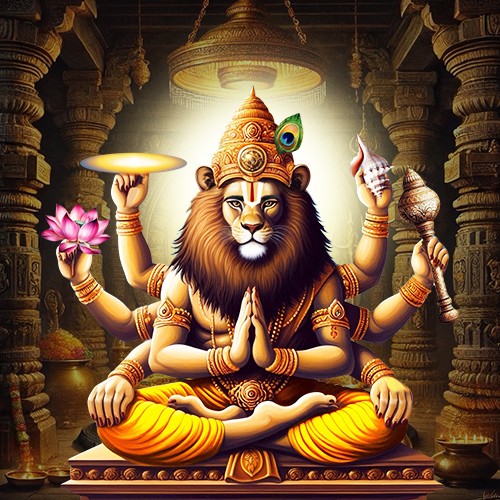
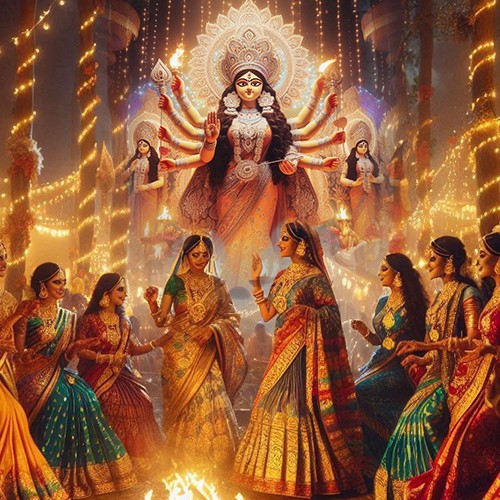
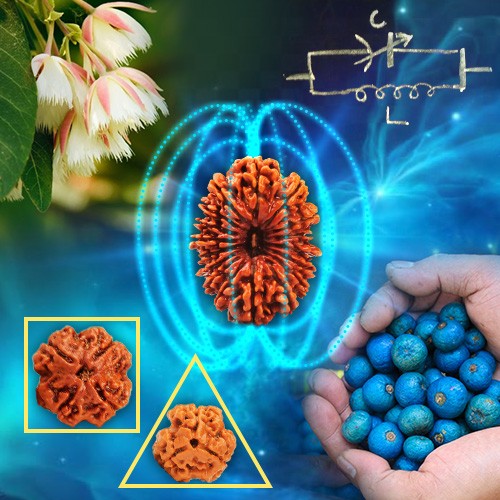

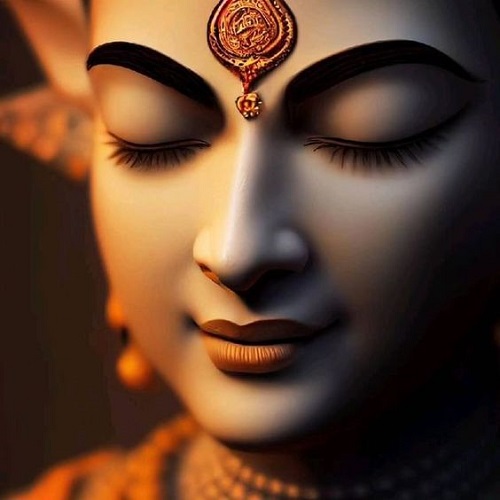
.jpg)

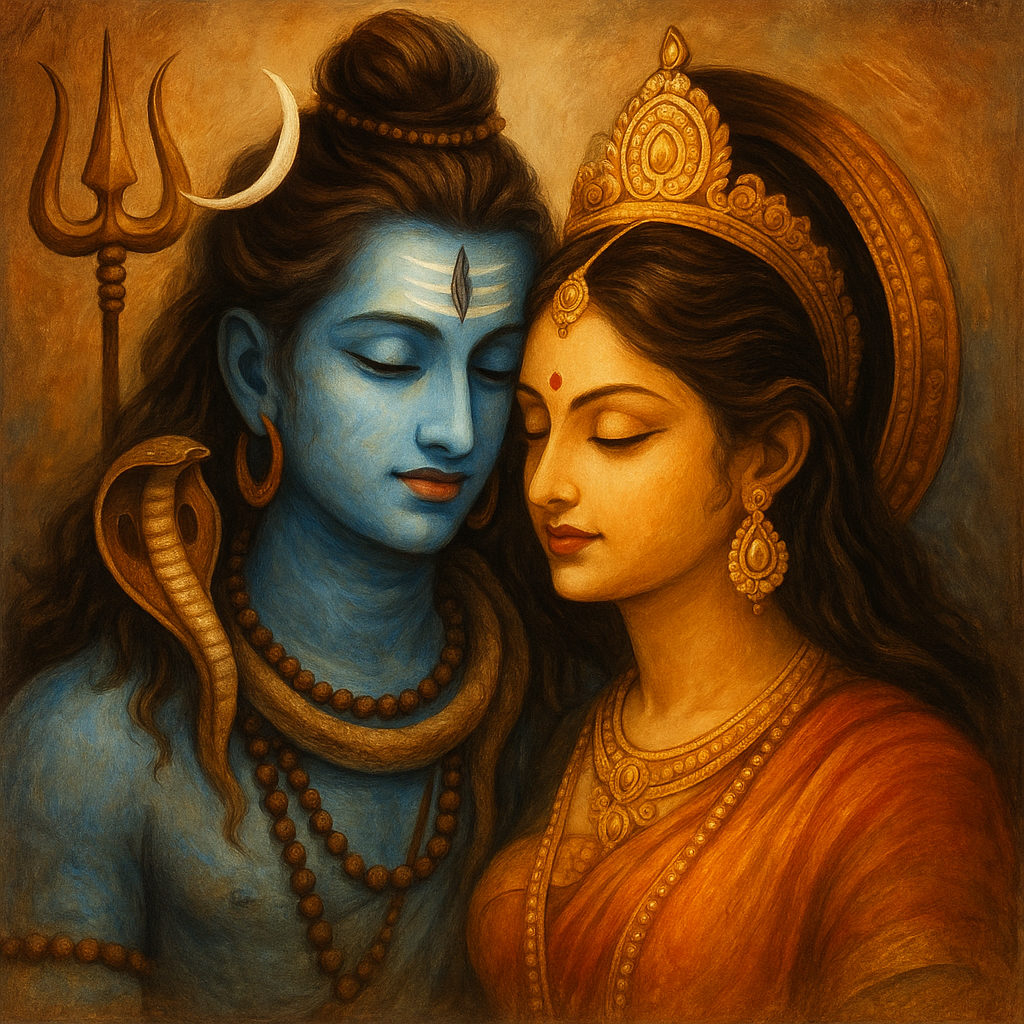
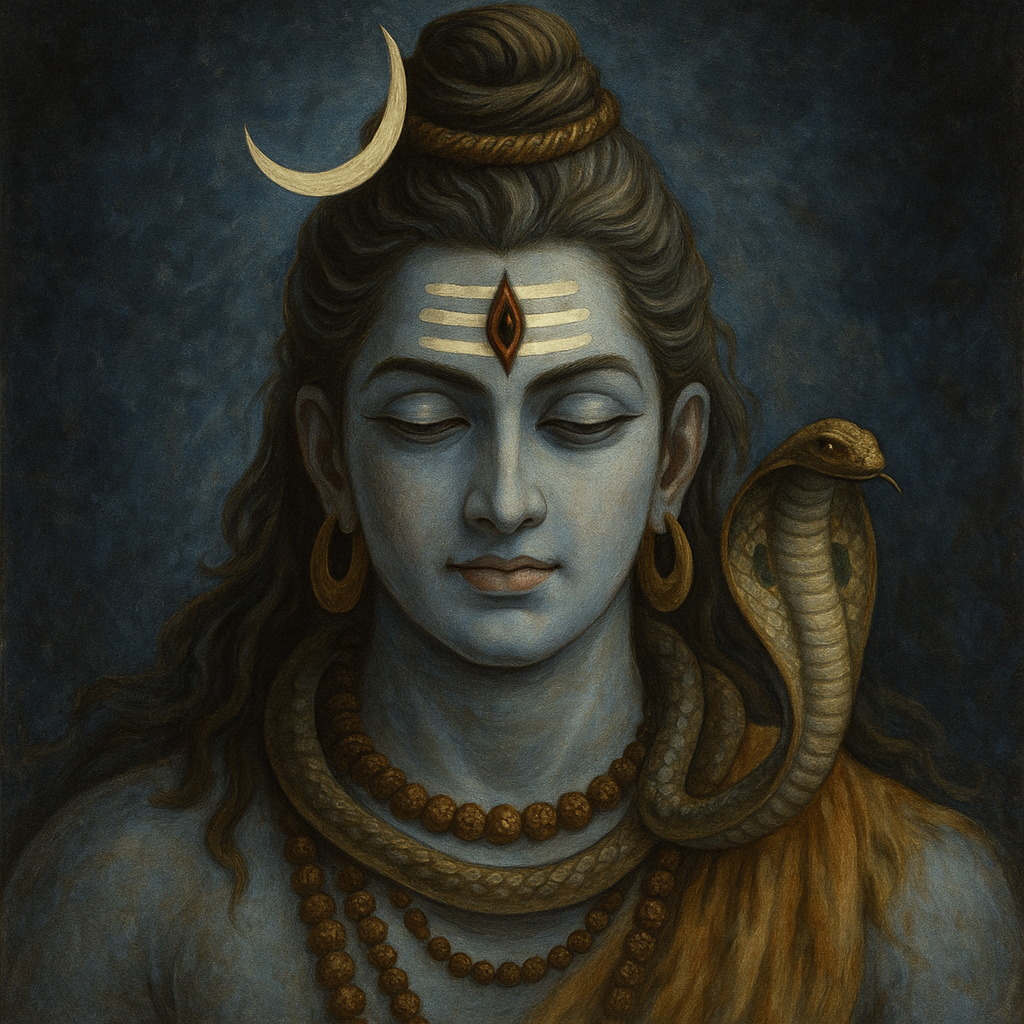
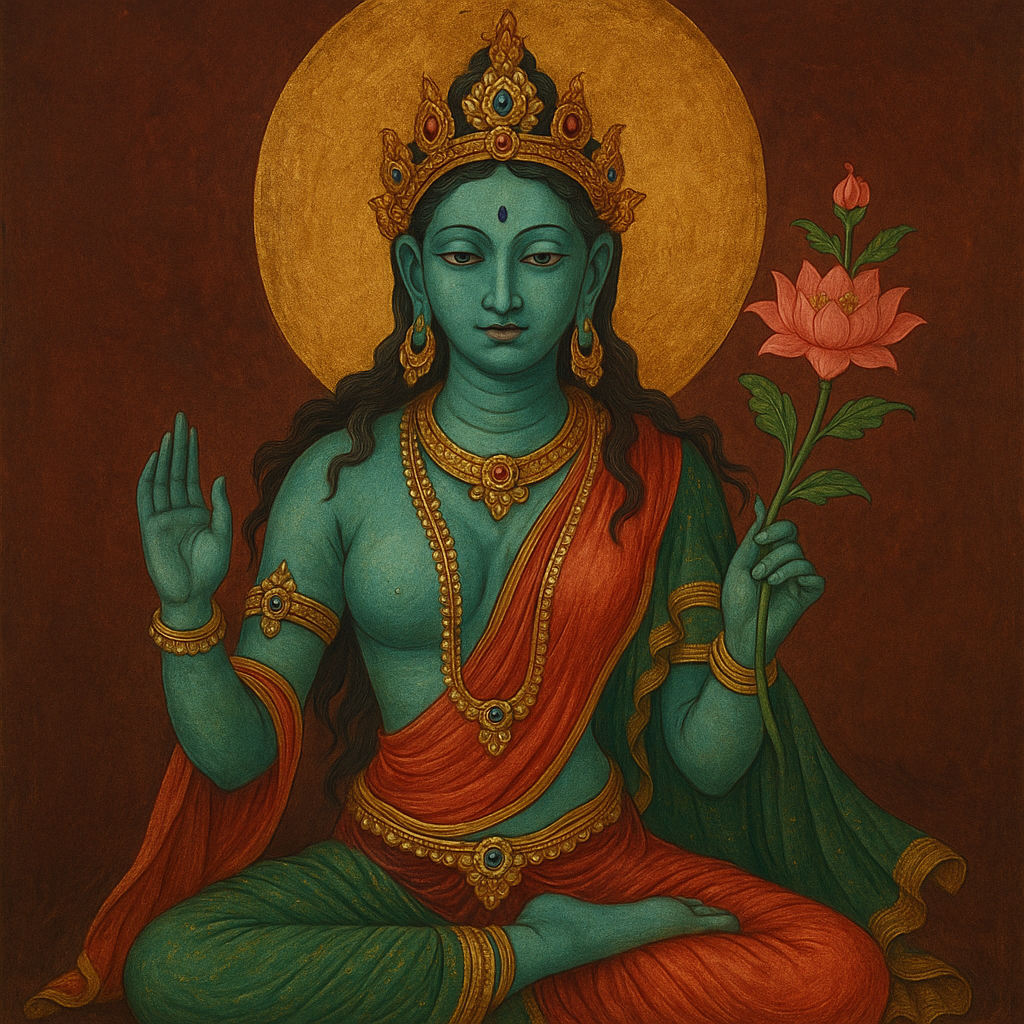
K.G.V.PRASADA RAJU
|March 7, 2025
Annapurna devi trust or temples in india